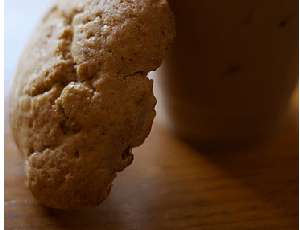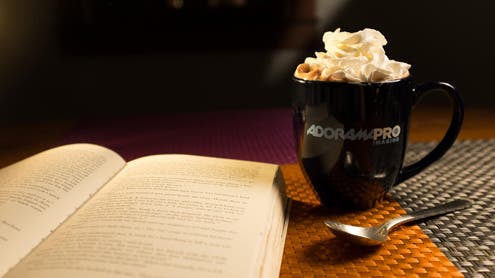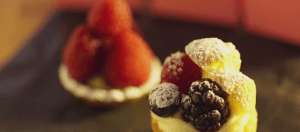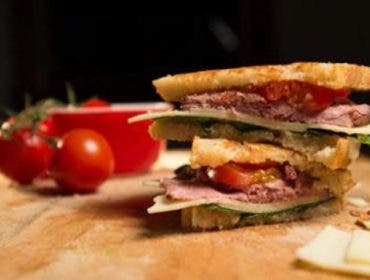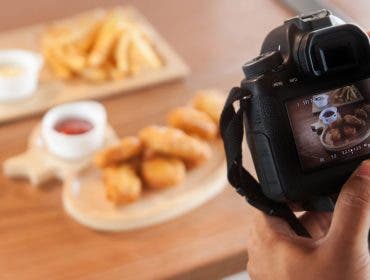Can a foodie find photographic ambrosia with a street-savvy MILC? Scott Baker says “yes”!
Photographing food is a real delight when you can capture its freshness and taste. It is not an easy task, though. Over the last few weeks I have taken a variety of food images with theFujifilm X-E1 camera and a variety of Fujinon XF lenses, all available at Adorama, and this has become my system of choice for food photography. Here’s why.
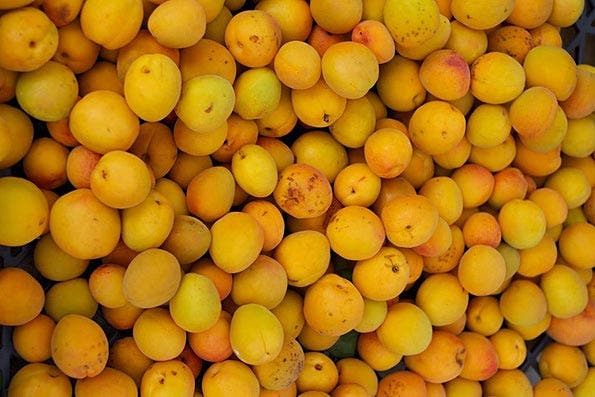
Appetizing Apricots in a produce bin. Gear:Fujifilm X-E1 with Fuji XF 35mm f/1.4 lens. Exposure: ISO 200, f/3.6, 1/340th of a second.
My favorite new camera for photographing food is the Fujifilm X-E1, a very light interchangeable lens mirrorless compact “MILC” camera with an organic 16MP sensor. Fujifilm has built up an impressive lens system in less than two years. As of September 2013 they have 9 XF lenses, and the Fujinon Lens Road map for the next 12 months points to a total of 10 XF lens made by Fuji. Each of these lenses are built to an extremely high build standard.The lenses are built from aluminum in most cases and are very light but have very tight tolerances and are very well dampened and focus with ease. Adorama carries the entire line of Fujifilm cameras, lenses, and accessories.
I shot this food series with theFujinon 18-55m f/2.8-4 zoom lens as well as theFujinon 60 mm F/2.4 lens and the Fuji XF 35mm f/1.4 lens. The lenses are extremely well built,and have Fujinon Super EBC lens coating. The color rendition and contrast of these lenses is right up there with the best Leica prime lenses.
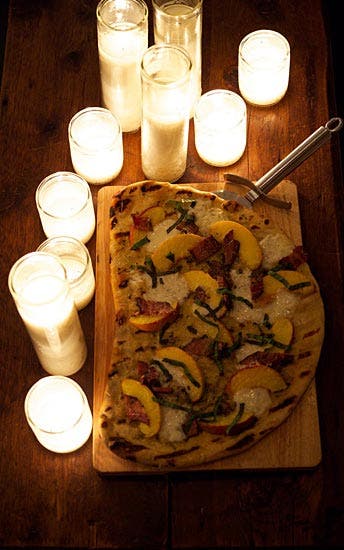
Pizza by candlelight. Fuji’s outstanding low-light high ISO image quality let me shoot this without fear. Gear: Fujfilm X-E1 with Fuji XF-18-55mm f/2.8-4 LM OIS lens. Exposure: ISO 1600, f/2.8, 1/20th of a second.
I particularly enjoyed shooting with the Fujinon 35mm f/1.4 lens. This lens overs the equivalent of a 50mm field of view, and with its fast aperture it has extraordinary low-light capabilities. It is sharp wide open and incredibly sharp stopped down only 1-2 stops.
When shooting food shots I look for interesting ambient lighting—especially candlelight, a raking bit of sunlight, or a light from a window. Food that is prepared a chef and served immediately is at its peak. You can get extraordinary images if you use natural light, especially if enhanced by candle light (the more candles the better!). By using the Fujifilm X-E1, with its outstanding low-light capabilities, in tandem with the 35mm f/1.4, I was able to comfortably capture interesting images with minimal loss of quality at higher ISO settings. I tend to shoot at an ISO of 400-800 inside a restaurant environment and iso 200 if outside, and go higher if it is especially . The 35mm f/1.4, shot wide open is especially wonderful for this type of shooting as it captures the subtle sharpness so well.
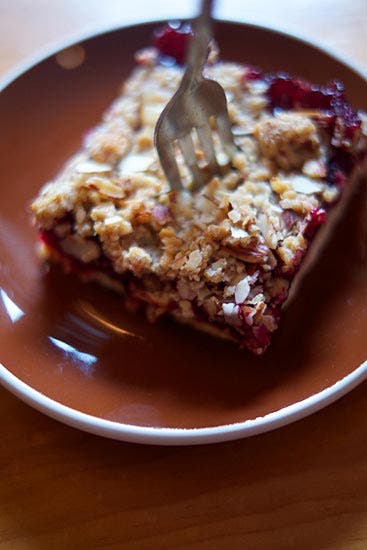
Stick a fork in it, this Tart’s ready for its closeup. Gear: Fujfilm X-E1 with Fujinon 35mm f/1.4 lens. Exposure: ISO 400, f/1.4, 1/60th of a second.
The Fujifilm XE-1 camera is very light and easy to use, and yet it delivers really stunning image quality. Image quality in food photography is key. The rendering of food especially close up is critical, and if you like to shoot wide open at f/1.4 or f/2.4 on the other lenses its critical that the Fuji XE-1 and the Fujinon lens are able to nail the focus and maintain critical sharpness. I am excited to say that all three lens excelled in this key task. The shooting of the cranberry tart, above, was a challenge, considering the key area of sharpness is in the center and only a small area is in critical focus. The sharpness is really quite stunning. This shot was hand-held, also making the results even more delightful.
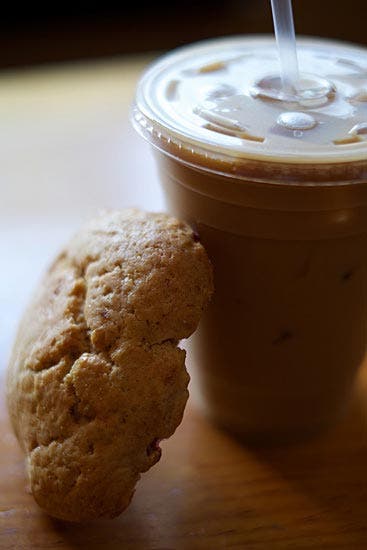
Cool shot of iced coffee. Gear: Fujfilm X-E1 with Fujinon 35mm f/1.4 lens. Exposure: ISO 200, f/3.6, 1/200th of a second.
When shooting food with the Fujifilm XE-1 I use the Auto WB feature —it does an excellent job, and I found I needed to do very little WB adjustment in Post Production. I use a calibrated Apple 30 inch Display and Aperture 3.0 for software to edit and manage my RAW images.
The Fuji XE-1 camera is made from aluminum alloy, has a very robust feel and extremely high build quality. Unlike many mirror-less and 4/3 camera lines, Fujifilm started its MILC line by first introducing high-end cameras for Professional shooters as well as Prosumers who are willing to spend more for better overall quality. (Fujifilm recently introduced a couple of MILCs designed for entry-level photographers. The sensor and the lenses are making for a very formidable system.
The days of lugging 1-2 heavy pro DSLR bodies around with a bag full of lens are fast disappearing. The most critical aspect that photographers look for are extremely high image quality and a robust well built camera system. All of the lenses have an adjustable shutter ring, and both the X-Pro 1 and X-E1 offer shutter speed dials and an Exposure Compensation dial that is built into the edge of the camera, making adjustments quick and intuitive. The XE-1 lacks the optical viewfinder of the X Pro-1, but I found that it was very easy to compose and shoot with using its electronic viewfinder.
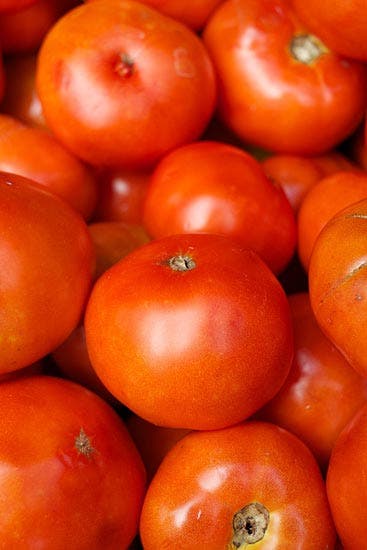
I say tomatoes: Gear: Fujfilm X-E1 with Fujinon 35mm f/1.4 lens. Exposure: ISO 200, f/3.6, 1/340th of a second.
I shot with three lenses: the Fujinon 35mm f/1.4 (a 50mm equivalent) the Fujinon 18-55mm f/2.8-4 zoom and the Fujinon 60mm f/2.4 lens which is a (90 mm equivalent) The zoom lens was very nice to shoot with and had the added bonus of having Fuji’s Optical Image Stabilization built in. This adds about thre stops to the system’s hand-holding ablities. The lens allows for fully automatic Program mode when you switch on the A on the lens and the A on the XE-1 body. I prefer to shoot food in Aperture priority mode, though, because I like to control depth of field and use the fast lens settings combined with the higher ISO settings.
The Fujinon 60mm lens (90mm equivalent) is also very sharp. I found it to be a great lens not only for food but also for portraits. The 35mm lens, though, was my favorite for food. It produces pleasing Bokeh and very shallow depth of field at the widest aperture. It’s especially useful when shooting food close up because it allows you to only focus on a key element.
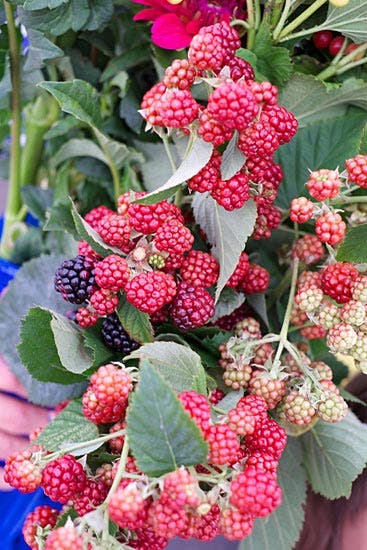
Juicy raspberries on the vine. Gear: Fujfilm X-E1 with Fujinon 35mm f/1.4 lens. Exposure: ISO 200, f/3.6, 1/40 of a second.
In the past, one needed elaborate staging and lighting, plus a stylist, to craft a great food photos. Strobes and other elaborate grips and tripods or camera stands were also prerequesites. With theFujifilm X-E1 or its older brother, the Fujifilm X-Pro 1, these are not required to get great images of food. Fuji is positioning as a vialbe alternative to the pro DSLRs. A Professional Photographer is looking for is Spectacular image quality and an straightforward camera that makes taking photographs a pleasure. The Fujifilm X-E1 Delivers!
Visit Scott W. Baker’s food photography and more at his web site, www.scottwbaker.com
